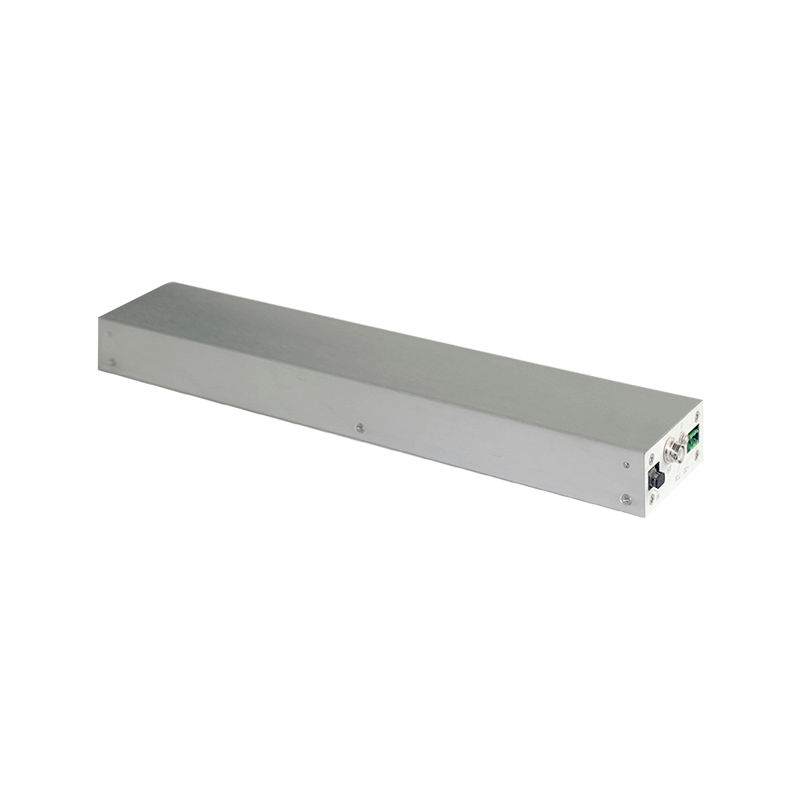Optimization of Discharge Channels in High-Voltage Power Supplies for Excimer Lasers
Excimer lasers, as high-power ultraviolet light sources, play an irreplaceable role in lithography and micro-machining. Their performance hinges on the stability and efficiency of high-voltage power supply discharge channels. Optimization involves pulse waveform modulation, electrode structure innovation, acoustic wave control, and maintainability design, which are critical for enhancing laser output quality. This article explores the core technical pathways for discharge channel optimization.
1. Pulse Front Modulation and Discharge Uniformity Enhancement
Traditional thyratron-based high-voltage power supplies typically exhibit pulse fronts exceeding 100 ns, leading to localized arcing and uneven energy deposition, which degrade gas composition and erode electrodes. Solid-state magnetic pulse compression (MPC) technology can optimize the pulse front to 50–100 ns, significantly reducing the delay between pre-ionization and main discharge and suppressing channel contraction:
• Reduced Impedance Fluctuations: Rapid voltage rise inhibits plasma channel constriction, ensuring uniform current distribution;
• Improved Energy Conversion: Minimized thermal losses increase the conversion of electrical energy to laser radiation, typically boosting efficiency by 15%–20%;
• Extended Gas Lifetime: Uniform discharge reduces halogen gas consumption (e.g., F₂), lowering gas replacement frequency and operational costs.
2. Discharge Circuit Topology Innovation and Filamentary Discharge Suppression
At high repetition rates, cathode hotspots can trigger filamentary discharge, where low-impedance channels concentrate current and may transition to arc discharge. Key optimizations include:
• Timed Switching Branches: Parallel switching branches (e.g., IGBTs or self-healing capacitors) activate during filamentary discharge phases, creating a low-impedance bypass to shorten its duration;
• Distributed Peaking Capacitors: Multi-capacitor arrays in symmetric layouts reduce local current density and hotspot formation.
3. Electrode Thermal Management and Material Innovations
Electrode temperature directly affects discharge stability. Conventional copper or tungsten electrodes suffer accelerated corrosion under thermal stress. Optimizations focus on:
• Embedded Cooling Channels: Helical or straight cooling holes (1–10 mm diameter) allow working gas to flow through electrodes, reducing surface temperatures below 45°C. Staggered hole patterns improve cooling coverage by over 30%;
• Composite Electrode Structures: Low-thermal-conductivity materials (e.g., metal-ceramic composites) embedded at electrode ends reduce electron flux density, while high-conductivity materials (e.g., pure copper) at the center enhance heat dissipation, extending electrode life to billions of pulses.
4. Active Control of Acoustic and Shock Waves
Nanosecond-scale energy injection generates supersonic shockwaves and acoustic waves, whose reflections disrupt subsequent discharges. Beyond passive dampers (e.g., porous plates), active solutions include:
• Microstructure-Guided Wave Scattering: Orthogonally aligned dovetail-shaped grooves (0.1–10 mm) on chamber walls scatter incident waves into multipath sub-waves, exploiting destructive interference to attenuate reflections;
• Sound-Absorbing Materials: Microstructures made of Al₂O₃ ceramics or metal foams absorb wave energy, reducing amplitude by 40%–60%.
5. Discharge Chamber Maintainability Optimization
Traditional electrode replacement requires chamber disassembly, increasing downtime. Modular designs offer solutions:
• Detachable Sealed Modules: A removable discharge chamber connects to the main body via grid-sealed inlets. Cathodes are pre-installed in the chamber, while anodes attach to the main body, reducing maintenance time by 70%;
• Flow-Optimized Grids: V-shaped baffles in gas inlets accelerate circulation and minimize turbulence, ensuring efficient gas renewal.
Conclusion
Optimizing discharge channels in excimer laser power supplies requires a multidisciplinary approach. By integrating pulse modulation, circuit topology, thermal management, wave control, and modular maintenance, discharge uniformity and plasma stability can be significantly improved while reducing lifecycle costs. Future research should focus on enhancing solid-state switch integration with magnetic compression and AI-driven real-time discharge control for intelligent channel optimization.




















